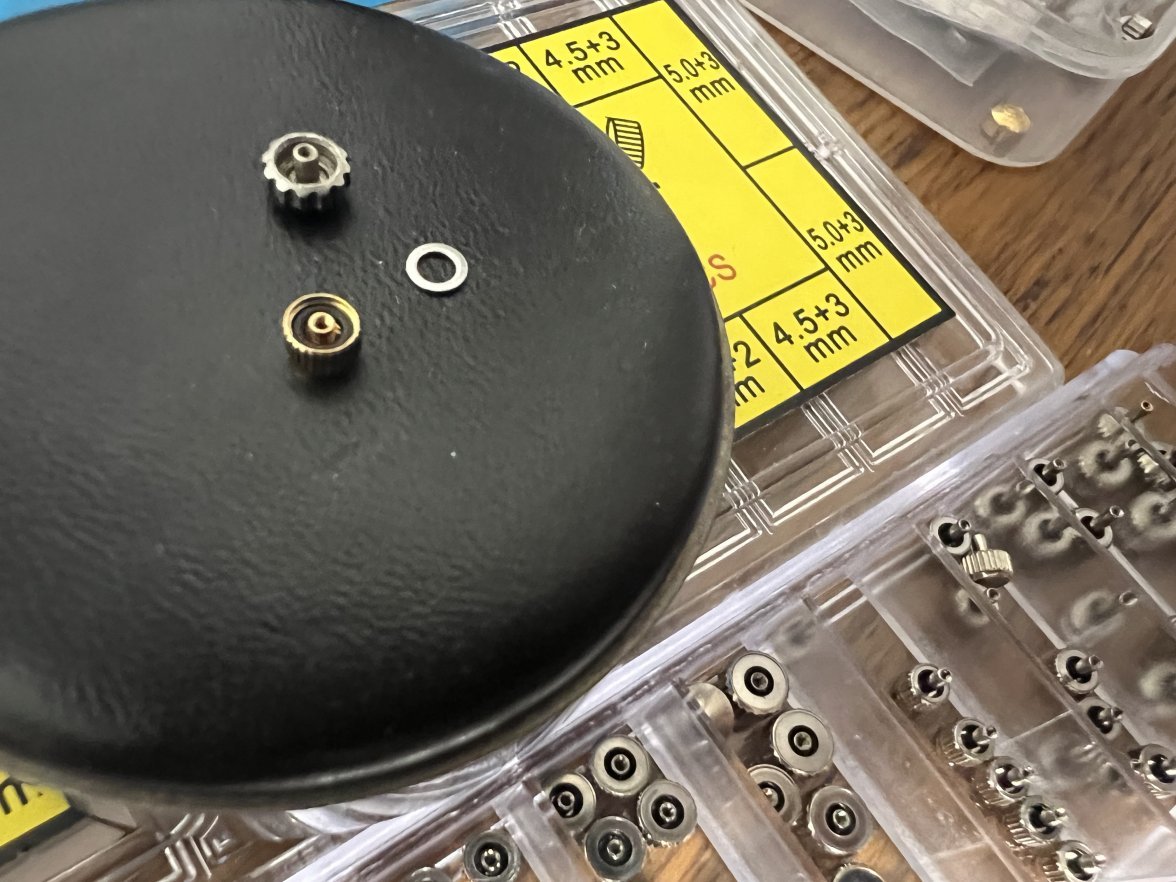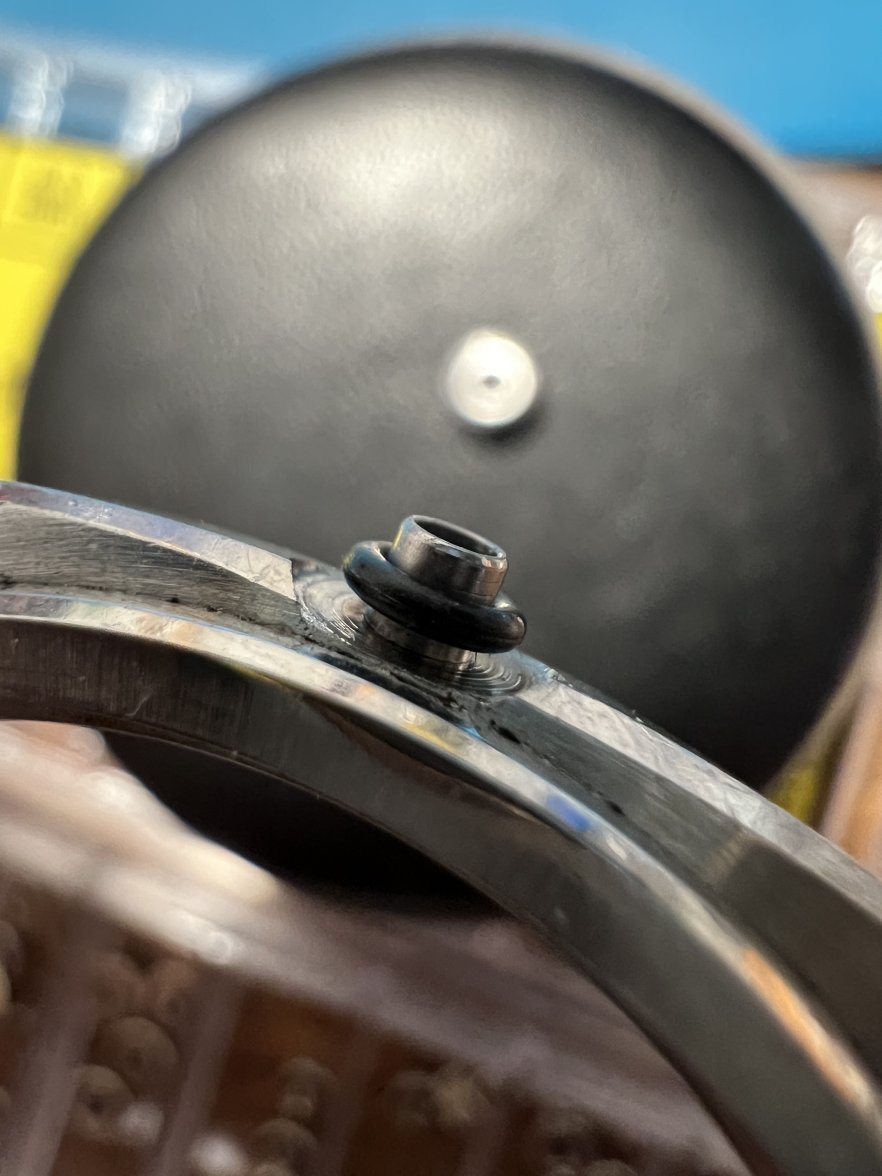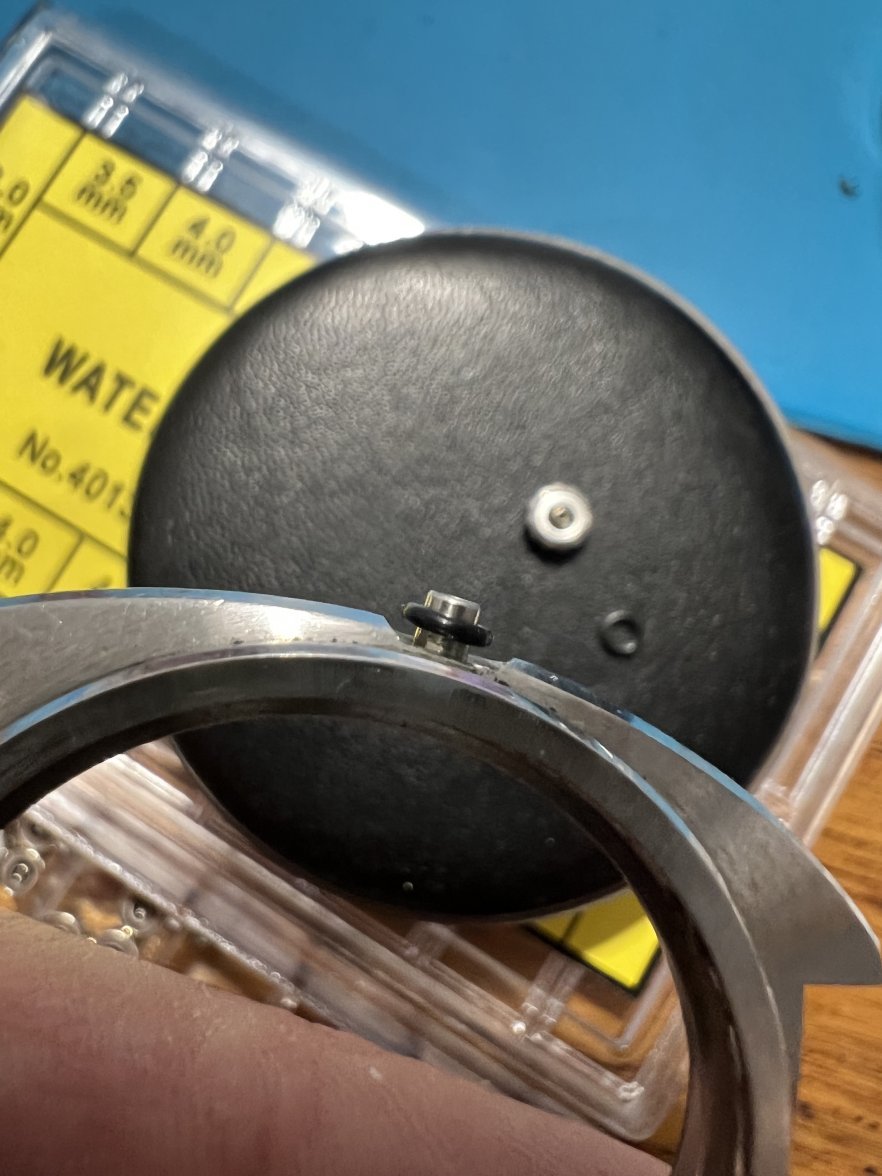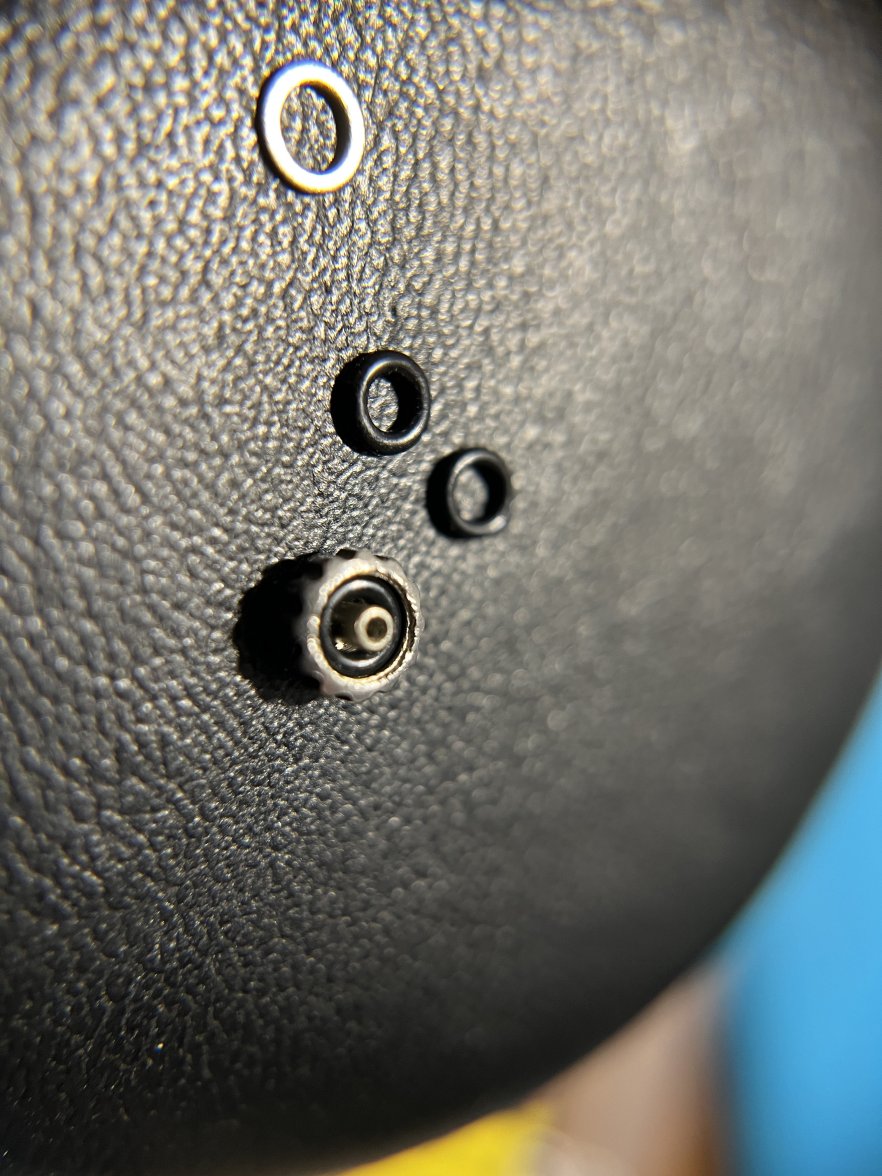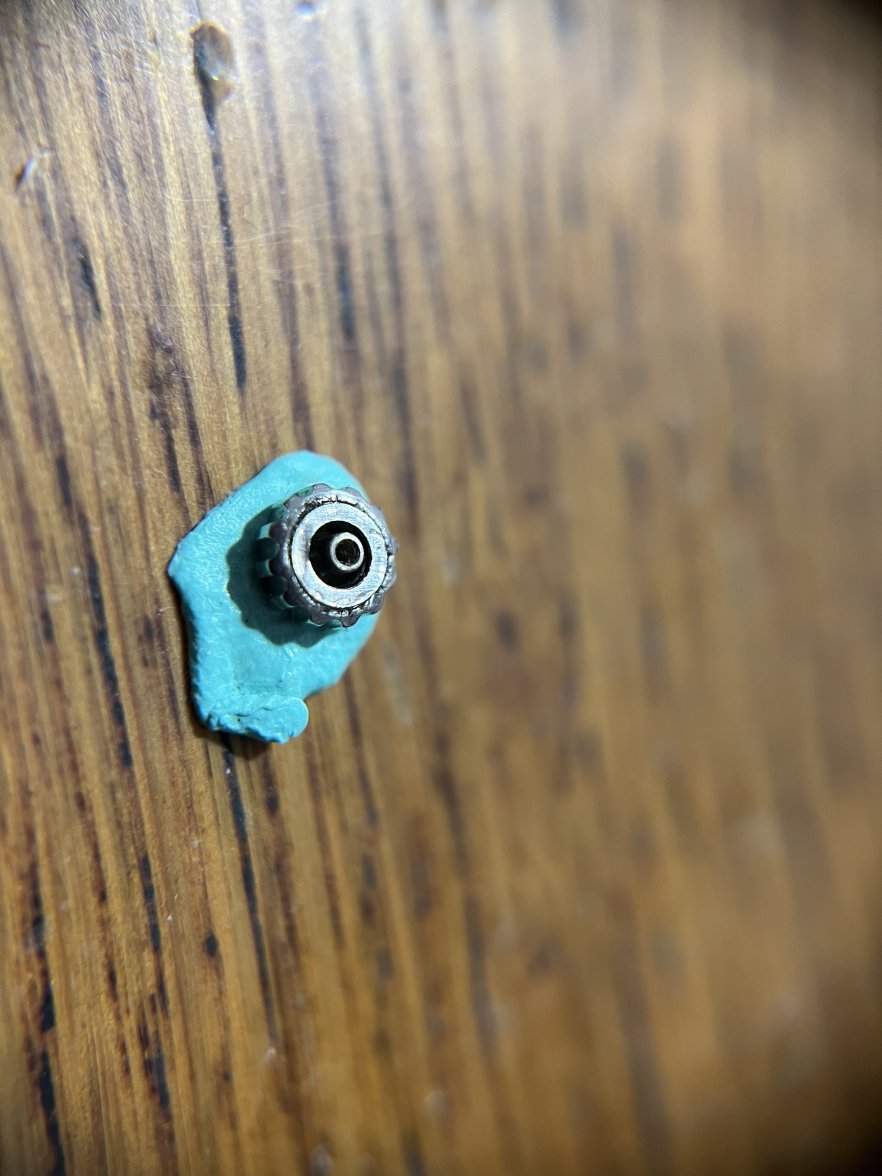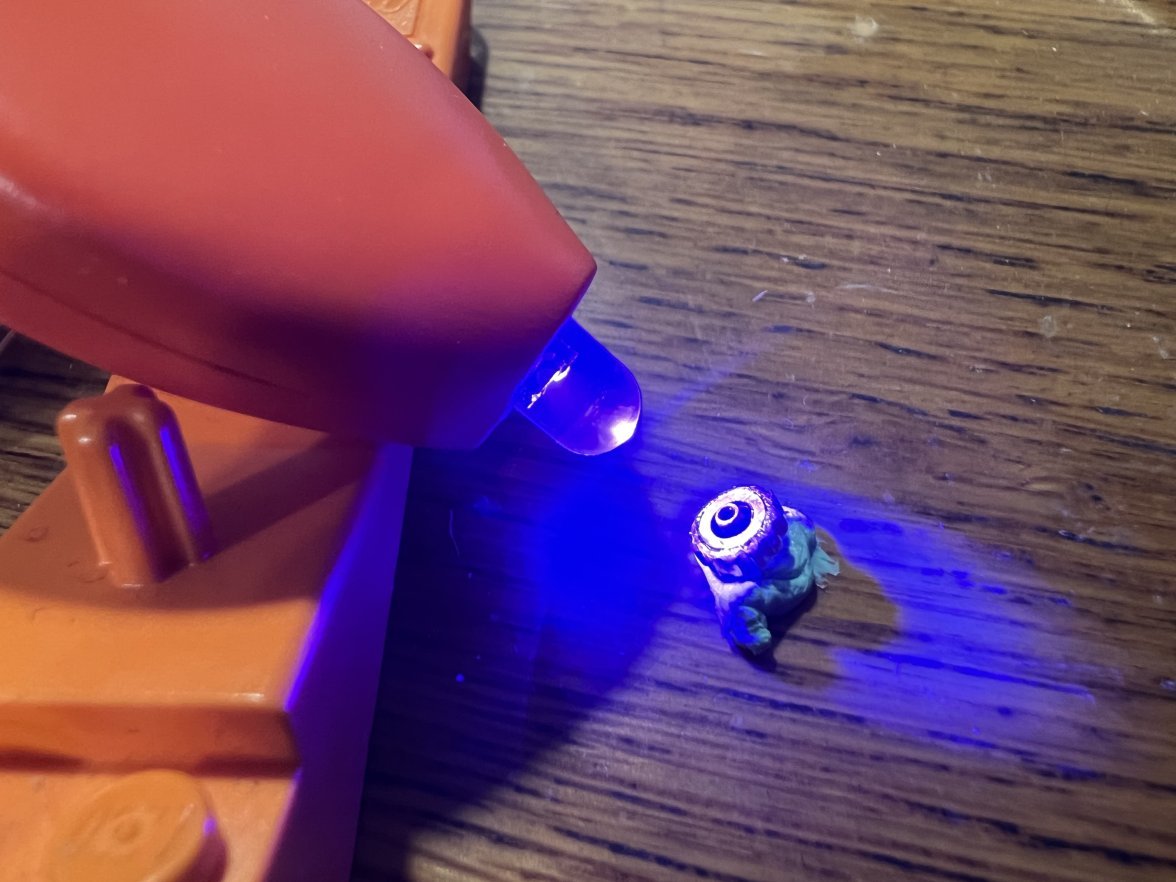kaplan
·It's almost impossible finding vintage 1966 style 168.017 crowns. I haven't seen a code for these, only modern 42054 ones are available. However these aren't very hard to find in loose form, they usually have a flat feet logo and they are 4.7-4.8mm wide, this matters as it's possible to find smaller ones more easily yet they don't look right
I bought this one for around $20 yet didn't pay much attention at the time of the missing inner parts, luckily it's cleaned and all the black gunk that's usually inside a crown is gone, so no need to go through stages of rigorous cleaning
For the missing metal spacer, I was thinking of fabricating a ring out of a flattened aluminum can, it's my go-to method for making functional simple parts, but luckily came up with a better approach, found a generic crown from another generic chinese crown pack that had the exact fitting size - as another idea, this donor crown also had a so-so fitting o-ring, so it alone could've solved the problem, but used 3.4 x 1.8 x 0.8 o-ring from the pack here a https://www.aliexpress.com/item/1005002059223869.html (The tube of the watches are 2mm, so 1.8 seemed ok to grab it, 1.7 was better when testing loose)
Finally used UV Resin to keep the metal in-place, applied it all the way around
The case I used for testing has a tube fitted for a 42054 crown though, which is a thicker crown, so the tube protrudes 0.1-0.2mm ish more than ideal, you might think 0.1mm 0.2mm is negligible, but these make really noticeable differences
I bought this one for around $20 yet didn't pay much attention at the time of the missing inner parts, luckily it's cleaned and all the black gunk that's usually inside a crown is gone, so no need to go through stages of rigorous cleaning
For the missing metal spacer, I was thinking of fabricating a ring out of a flattened aluminum can, it's my go-to method for making functional simple parts, but luckily came up with a better approach, found a generic crown from another generic chinese crown pack that had the exact fitting size - as another idea, this donor crown also had a so-so fitting o-ring, so it alone could've solved the problem, but used 3.4 x 1.8 x 0.8 o-ring from the pack here a https://www.aliexpress.com/item/1005002059223869.html (The tube of the watches are 2mm, so 1.8 seemed ok to grab it, 1.7 was better when testing loose)
Finally used UV Resin to keep the metal in-place, applied it all the way around
The case I used for testing has a tube fitted for a 42054 crown though, which is a thicker crown, so the tube protrudes 0.1-0.2mm ish more than ideal, you might think 0.1mm 0.2mm is negligible, but these make really noticeable differences
Edited:
